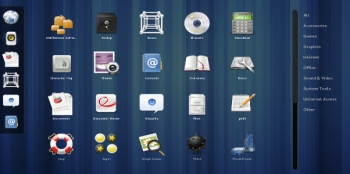This should not come as a surprise to any GNU/Linux user; GNOME has been involved in this exercise for a long time and one should only worry when it does not happen.
This time, the recriminations come from Benjamin Otte, a developer who, after first describing the annual GNOME developer conference GUADEC as a "self-congratulating echo chamber" when announcing that he would not be attending, then went on to list a number of problems with the project.
His detailed post was titled "Staring into the abyss", which, in itself, gives an idea what it is all about. He mentioned a number of worrying things about GNOME - core developers are leaving, the project is understaffed, GNOME is a Red Hat project (meaning that it follows the company's dictates), the project has no goals, and it is losing both marketshare and mindshare.
|
|
Unfortunately, what had been designed wasn't really good for PC users. It was a one-stop shop that resembled the interface of a mobile phone, similar to the Unity interface that Canonical, the company that produces the Ubuntu GNU/Linux distribution, has created.
Over time, there have been some tweaks to the GNOME 3 environment but users have not been happy. High-profile people like Linus Torvalds and Ted Ts'o have voiced their complaints in no uncertain terms. Many people have spoken publicly about migrating to other DEs like LXDE and XFCE.
In short, it hasn't been a good year for GNOME since version 3 hit the download servers.
GNOME has a reputation for not listening to its users, no matter who they are. According to Torvalds, the developers have their heads up their arses. That may sound harsh but then Torvalds is a man who does not dissemble - he is an engineer and tells it exactly like it is. Of course, he is not an expert in user interfaces but his complaints about GNOME 3 have been echoed in various degrees by users of varying levels of expertise.
Otte's claim that Red Hat is controlling GNOME does bear some examination, because the company's goals and those of GNOME - as stated - differ. Red Hat has no interest in the desktop; its income comes from Linux on the server. The company long ago made its strategy plain.
But GNOME has nothing but the personal desktop user as its target. If people stop using it as a personal DE, then it would be time for GNOME to shut shop.
And that is a worrying thought. If Red Hat is pulling in one direction, and GNOME in another, something has to give.
By contrast, KDE, the other big DE project for GNU/Linux users, is light years ahead. After the disaster of the 4.0 release, the KDE developers paid attention to users' plaints and fixed things. The DE is now very good though, like GNOME 3, it requires very robust hardware to work at speed.
KDE visionary Aaron Seigo is hard at work on a tablet interface which should be released sometime this year. GNOME has not made any moves in this direction.
When GNOME completed a decade of existence in 2007, , I posed the question: was such a project really needed? If the project continues the way Otte says it is going, then it may come to the point where the process of natural selection kicks in and only the fit survive.








































